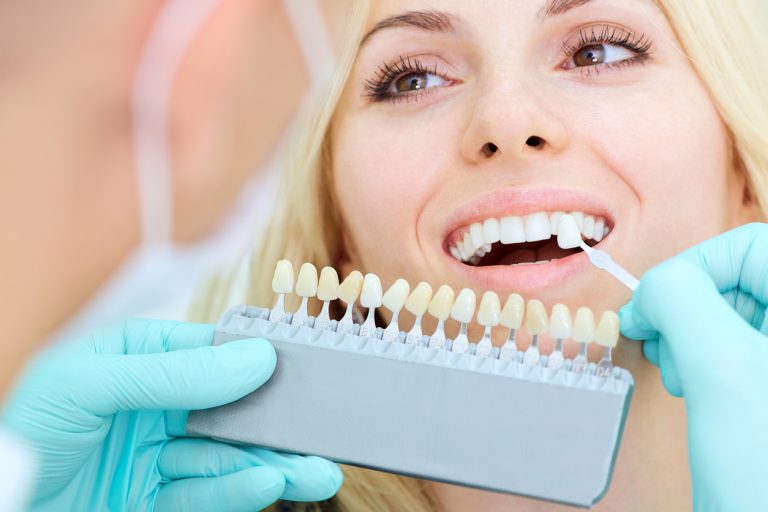Your teeth are more than just tools for chewing and presenting a beautiful smile; they can also provide clues about your overall health. The color of your teeth, in particular, can reveal a lot about your oral hygiene habits and potential health issues that might need attention. This article will decode the various shades and what they signify about your health.
Unveiling the Spectrum of Teeth Colors

The Natural Color of Teeth
Firstly, it’s important to understand that the natural color of teeth varies from person to person. It is typically an off-white color with a slight yellowish hue, influenced by the dentin underneath the enamel. The thickness and smoothness of the enamel, which is semi-translucent, also affect the perceived color of your teeth.
The Significance of Yellow Teeth
If your teeth appear more yellow than the usual off-white, it could be due to several factors. One common cause is the thinning of the enamel layer due to aging, allowing the yellow dentin underneath to show through. Additionally, certain lifestyle habits such as smoking and consuming foods and drinks like coffee, tea, and wine can stain your teeth, giving them a yellowish tint.
While yellow teeth may not necessarily indicate a health problem, they can point towards poor oral hygiene. An accumulation of plaque and tartar can also make teeth appear yellow. Regular brushing, flossing, and professional cleanings from an orthodontist can help remove these buildups and improve the color of your teeth.
The Alarm of Brown or Dark Teeth

Unlike yellow teeth, brown or dark teeth can be more alarming. This discoloration can be due to severe staining from food, beverages, or tobacco. However, it could also signify more serious conditions. Tooth decay often presents as brown or black spots on the teeth. Long-term use of certain medications or exposure to excessive fluoride can also lead to brown discolorations.
The Mystery of Gray or Blue Teeth
Gray or blue teeth are generally a sign of a dead tooth. This occurs when the blood supply to the tooth is cut off, usually due to trauma. The tooth may then darken over time due to the breakdown of red blood cells within it. This condition requires immediate attention and treatment from an orthodontist.
White Spots and Streaks
White spots or streaks on your teeth can indicate the early stages of tooth decay, where the enamel starts to demineralize. They can also be a sign of fluorosis, a harmless condition caused by excessive fluoride intake during childhood when teeth are still developing.
The Role of an Orthodontist

To maintain dental health, regular visits to an orthodontist for checkups and cleanings are crucial. An orthodontist in Westminster, can provide comprehensive dental care, including cleaning, tooth alignment, and other corrective treatments. The expertise and tools these professionals possess make them ideal for keeping your teeth and gums healthy.
They can also provide personalized recommendations to help you achieve optimal dental health. For instance, if your teeth are yellow due to staining, an orthodontist can suggest professional teeth whitening procedures or offer advice on dietary changes to prevent further discoloration.
Decoding the Color: A Holistic Approach
Remember, the color of your teeth is just one aspect of your oral health. It’s equally important to pay attention to other signs like tooth pain, sensitivity, bleeding gums, or bad breath. These symptoms, coupled with changes in tooth color, should not be ignored as they can indicate underlying oral health issues.
The Importance of Regular Dental Check-ups
Regular dental check-ups are crucial in catching any potential issues early, before they progress into more serious conditions. Moreover, an orthodontist can offer advice on maintaining good oral hygiene practices at home, including the correct way to brush and floss and the best type of toothpaste to use for your specific dental needs.
The orthodontist Westminster professionals also emphasize the importance of a balanced diet for good oral health. Consuming a diet rich in fruits, vegetables, lean proteins, and dairy products can supply essential nutrients for maintaining strong and healthy teeth.
Prevention: The Key to Oral Health

Preventing oral health issues is much easier and cost-effective than treating them. Regular brushing and flossing, avoiding tobacco, and limiting intake of sugary drinks and foods can significantly reduce the risk of tooth decay and gum disease. Regular professional cleanings can also help keep your teeth white and healthy.
Moreover, incorporating a regular dental check-up into your health routine is a great preventative measure. A bi-annual visit to your orthodontist will help ensure that your teeth are in good condition and detect any potential problems early.
The Final Word
The color of your teeth can provide valuable information about your oral and overall health. From indicating poor oral hygiene to hinting at more serious health conditions, changes in tooth color should not be overlooked. Regularly monitoring the color of your teeth and maintaining good oral hygiene practices can go a long way in ensuring your oral health.
If you notice any significant changes in your teeth color or other oral health issues, make sure to visit your orthodontist promptly. An orthodontist in Westminster or your local area can provide expert advice and treatment options to maintain and improve your oral health.
Remember, your oral health is a crucial part of your overall well-being. A beautiful, healthy smile is more than just an aesthetic asset; it’s a window to your overall health. So, keep smiling and take good care of your teeth!

